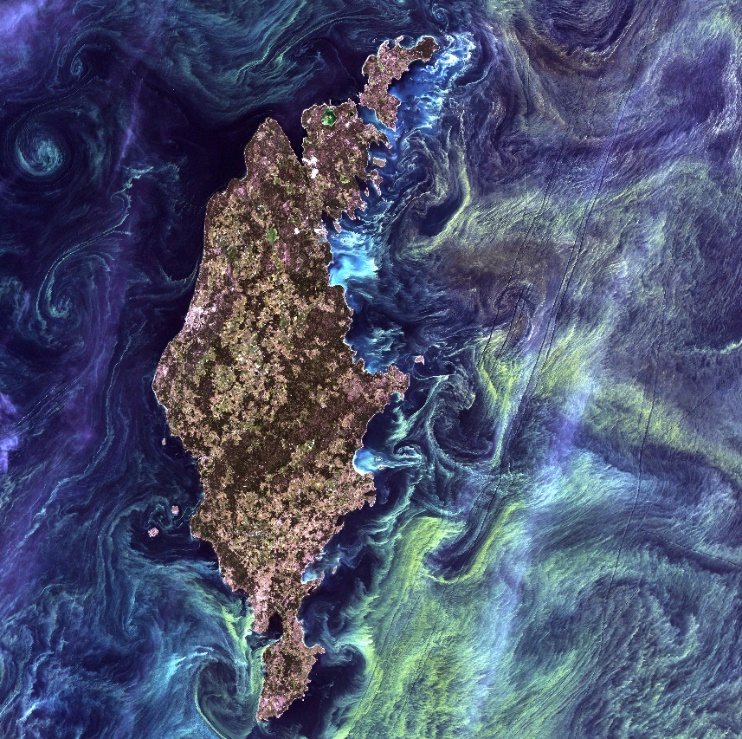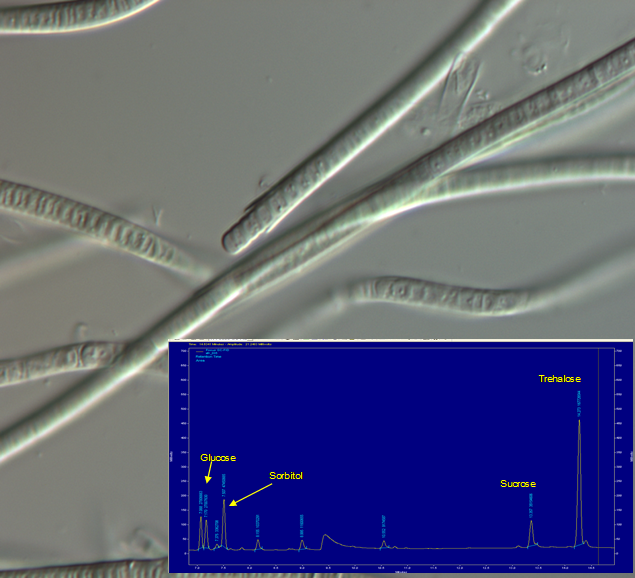5. Stress acclimation of cyanobacteria in the natural environment
In present days, cyanobacteria are important players in the global carbon as well as nitrogen cycles. As photosynthetic organisms they contribute significantly to annual carbon fixation. Many N2-fixing cyanobacteria also produce substantial amounts of combined nitrogen for other organisms particularly in the open oceans. However, many cyanobacteria are also producing toxins, which are harmful for other organisms especially during mass developments, so-called cyanobacterial blooms. Toxic cyanobacterial blooms are proposed to increase in their size and frequencies in the next years due to the climate change.
Microcystis aeruginosa is an infamous bloom-forming cyanobacterium occurring in many freshwater habitats, which often produces the hepatotoxin microcystin. Microcystin can be linked to several cellular proteins, among them RubisCO in cells of M. aeruginosa (Zilliges et al. 2011). These findings indicate that microcystin might play a regulatory role for carbon acclimation especially under bloom-forming conditions such as high light stress. In cooperation with Prof. Elke Dittmann (University of Potsdam), we are analyzing the influence of microcystin on RubisCO activity and CCM functioning (HA2002/20-1). First results showed that RubisCO localization changes in cells of M. aeruginosa in dependence of microcystin and light stress (Barchewitz et al. 2019).
Another infamous toxic cyanobacterium is Nodularia spumigena, which regularly forms toxic blooms in the central Baltic Sea. Nodularia is a typical brackish water adapted cyanobacterium, which shows optimal growth at salinities around 10 PSU (Möke et al. 2013). It responds to bloom-formation associated conditions such as high light and high oxygen saturation with the coordinated expression of many stress-responsive genes (Kopf et al. 2015). In cooperation with Prof. Matthias Labrenz (Institute of Baltic Sea Research Warnemünde), we are analyzing the influence of different phosphate regimes on the growth and gene expression of Nodularia in the frame of the P-Campus in Rostock. The combined data from laboratory and field experiments will show whether or not P-limitation is triggering mass developments of Nodularia in the central Baltic Sea.
Cyanobacteria are not only found in aquatic but also terrestrial habitats. In the latter cyanobacteria are pioneer organisms in the development of so-called biological soil crusts (BSC). The cyanobacterial community structure in dependence on annual rainfall has been analyzed for many years in the Negev desert of Israel (Hagemann et al. 2017). The group of Prof. Aaron Kaplan (Hebrew University of Jerusalem, Israel) isolated the strain Leptolyngbya ohadii from the BSC of the Negev. This cyanobacterium shows a remarkable desiccation tolerance. Processes involved in the metabolic basis and regulation of this acclimation process are under investigation in a project supported by the Alexander von Humboldt foundation.
References
Barchewitz T, Guljamow A, Meissner S, Timm S, Henneberg M, Baumann O, Hagemann M, Dittmann E (2019) Non-canonical localization of RubisCO under high light conditions in the toxic cyanobacterium Microcystis aeruginosa PCC7806. Environmental Microbiology 21:4836-4851
Hagemann M, Henneberg M, Felde VJMNL, Berkowicz SM, Raanan H, Pade N, Felix-Henningsen P, Kaplan A (2017) Cyanobacterial populations in biological soil crusts of the northwest Negev desert, Israel – effects of local conditions and disturbance. FEMS Microbiology Ecology 93:fiw228
Kopf M, Möke F, Bauwe H, Hess WR, Hagemann M (2015) Expression profiling of the bloom-forming cyanobacterium Nodularia CCY9414 under light and oxidative stress conditions. ISME Journal 9:2139-2152
Möke F, Wasmund N, Bauwe H, Hagemann M (2013) Salt acclimation of Nodularia spumigena CCY9414 – a cyanobacterium adapted to brackish water. Aquatic Microbial Ecology 70:207-214
Zilliges Y, Kehr JC, Meissner S, Ishida K, Mikkat S, Hagemann M, Kaplan A, Börner T, Dittmann E (2011) The cyanobacterial hepatotoxin Microcystin binds to proteins and increases the fitness of Microcystis under oxidative stress conditions. PLoS ONE 6:e17615


